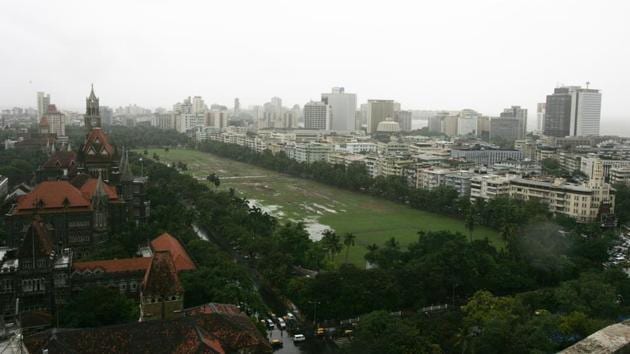Unesco world heritage tag for South Mumbai’s Victorian and Art Deco buildings
This is the city’s third such site, after the Elephanta Caves and CSMT; new precinct added on Saturday at session underway in Bahrain.
It’s time to celebrate. Mumbai’s rich cluster of Victorian and Art Deco buildings in the Fort precinct and Marine Drive has been declared a Unesco World Heritage Site.

With this, Mumbai gets its third such site — the Elephanta Caves and the Chhatrapati Shivaji Maharaj Terminus are also on the Unesco list. And Maharashtra now has more than any other state in the country, with a total of five sites, including the Ajanta and Ellora caves in Aurangabad.
Collectively known as the ‘Victorian Gothic and Art Deco Ensembles of Mumbai’, the new Mumbai precinct was added to the global list of heritage sites on Saturday, at the 42nd session of the Unesco World Heritage Committee, currently underway in Manama, Bahrain.

The ensembles include the structures that line the city’s Oval Maidan — a row of 19th-century Victorian buildings characterised by Gothic spires and gargoyles on one side, and the 20th-century Art Deco structures on the other.
The first lot includes historic landmarks like the Bombay High Court, University of Mumbai, David Sassoon Library and Maharashtra Police Headquarters buildings. The Art Deco ones are mainly residential, but the ensembles also includes the buildings along Marine Drive, and the Eros and Regal cinema halls.
Together, the collection embodies the 200 years that transformed a small coastal fortification into a preeminent colonial city of the British Empire.

“These historic buildings are unique because they’re not dead monuments but active public buildings in use as courts, libraries and cinema halls,” says conservation architect Abha Narain Lambah, who put together the three-volume nomination dossier and management plan, with over 1,500 pages of historical narrative, maps, drawings and notes on each of the 94 buildings. In this, she stresses, she was supported by various citizens’ groups from the precinct.
“This tag means an international acknowledgement of Mumbai’s pioneering role in managing historic urban heritage that is in living use,” Lambah adds. “It also positions Mumbai high on the global map of financial and cultural destinations and will translate into increased cultural tourism in Maharashtra.”
The inscription was declared after an onsite technical evaluation and positive recommendation by Icomos (the International Council on Monuments and Sites), the technical advisory body to Unesco, the United Nations Educational, Scientific and Cultural Organization.

“It’s good to see sites of cultural significance getting their due after all this time,” said Pankaj Joshi, executive director of the Urban Design Research Institute (UDRI), an independent thinktank. “This recognition might prompt a substantially larger impetus to conservation of sites of cultural and heritage significance. They can now get funding not just from the state but also from international agencies.”
Noted architect and activist PK Das, whose wide spectrum of work includes slum rehabilitation projects and the development of the city’s waterfronts, said the recognition was also a reminder for Mumbai to recognise the values and importance of conservation.
“We don’t seem to understand that, given the way we go about our Development Plan and aspire only for growth,” he said. “Conservation is significant to development. The heritage tag will be a good halt to Mumbai’s mindless construction and expansion obsession, which has been counterproductive.”



